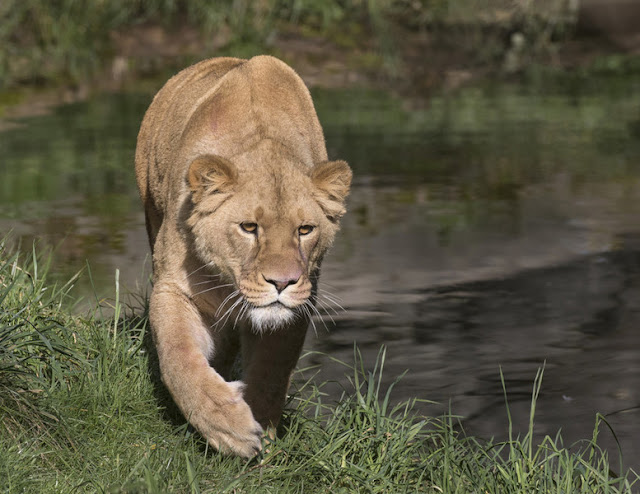Posted by Craig Newberry, Communications
It's official! You can now come see Tandie the lion in our African Savanna lion habitat. The 8-year-old male, who first stole the heart of Seattle as a cub, has spent the last few weeks acclimating to his new home and animal keepers. And now he's ready to show off for guests in the public side of his habitat.
 |
| Tandie is back! Photo: Jeremy Dwyer-Lindgren/Woodland Park Zoo |
Tandie, whose name means fire, was born as a triplet at Woodland Park Zoo in 2014 to parents Adia and Xerxes. The big cat arrived back in Seattle last month after living at Oakland Zoo since 2016. And he's not alone; he shares the spotlight with female Ilanga, 5. The pair have been getting to know each other and are getting along well. “This has been a big adjustment for both Tandie and Ilanga, but they’re both getting along really well. It will be exciting to see how their relationship continues to develop,” said Kim Szawan, an animal care manager at Woodland Park Zoo.
 |
| Illanga is our female who shares the African Savanna lion habitat with Tandie. Photo: Dennis Dow/Woodland Park Zoo |
While there is a breeding recommendation between Tandie and Ilanga, the zoo doesn’t plan to breed them in the near future. Their pairing will provide each lion with social interaction that is important for this social species.
 |
| On his first day out, Tandie decided to climb the tree to get a better view of his territory! Photo: Jeremy Dwyer-Lindgren/Woodland Park Zoo |
The two lions are a South African lion subspecies, Panthera leo krugeri, known as the Transvaal lion. The South African lion subspecies ranges in Southern Sahara to South Africa in grassy plains, savanna and open woodlands, excluding the Congo rain forest belt. These lions range in weight from 260 to more than 400 pounds.
 |
| Tandie lived in this same habitat as a little cub—and he has returned as a king! |
Woodland Park Zoo partners with and supports the Lion Landscapes program in and around Ruaha National Park in Tanzania, which is protecting as much as 10% of the remaining population of wild lions in their landscape. The program continues to add members and focuses on reducing the key threat of human-carnivore conflict in the Ruaha landscape.
Comments
Post a Comment